NZD/USD recovers notably after RBNZ rate hike, but stays in range below 0.6467 temporary top. Outlook is staying bullish for now, as NZD/USD is trying to draw support from head and shoulder neckline (ls: 0.6195, h: 0.6059, rs: 0.6211), as well as 55 day EMA (now at 0.6323). Another rise is in favor through 0.6467, sooner rather than later.
Either as a corrective rebound, or part of an up trend, rise from 0.6059 should target 0.6575 resistance zone, which is close to 38.2% retracement of 0.7463 (2021 high) to 0.6059 at 0.6595.
However, another decline, and sustained trading below 55 day EMA will invalidate this view and bring retest of 0.6059 low instead.




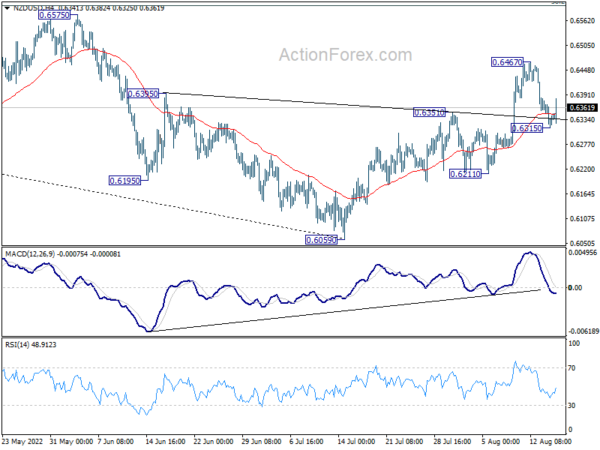
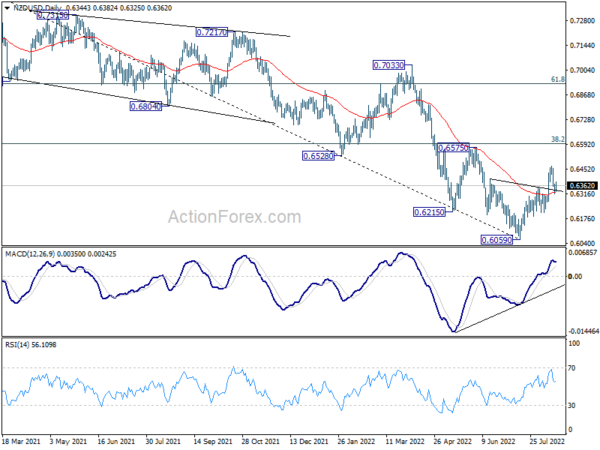
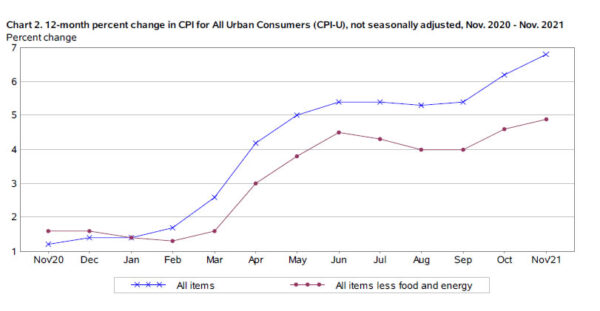
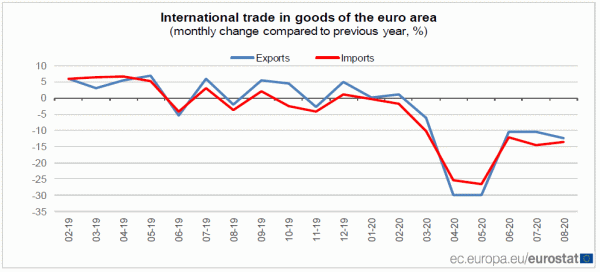
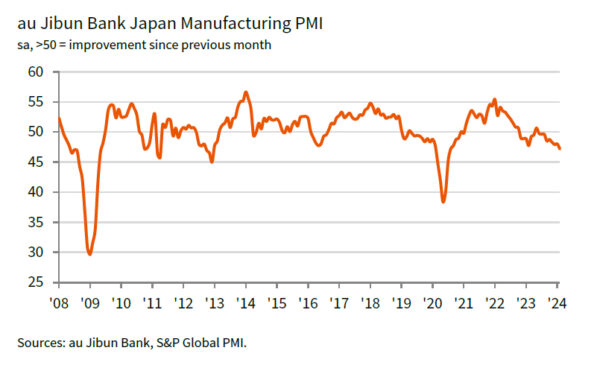
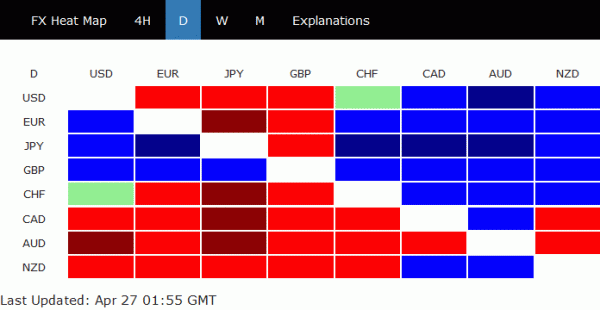
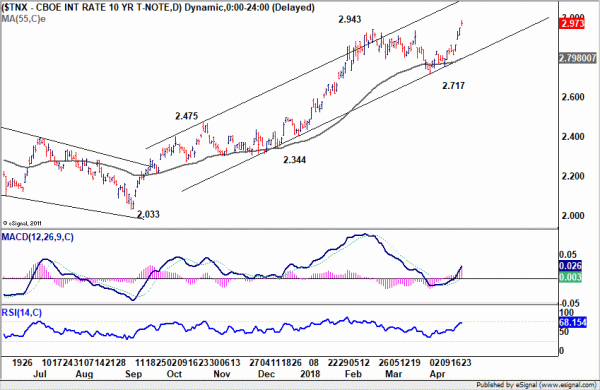
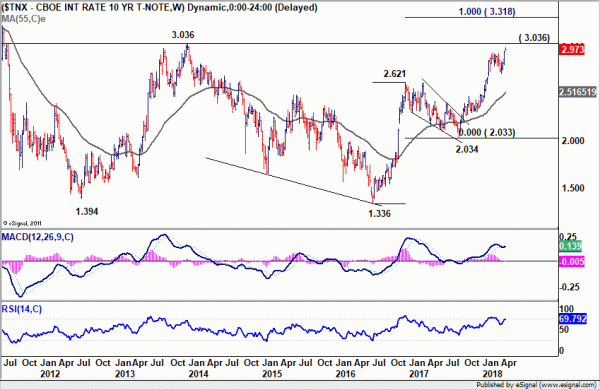
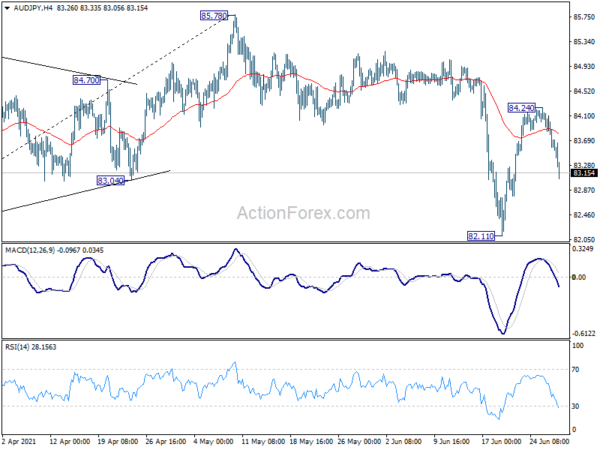
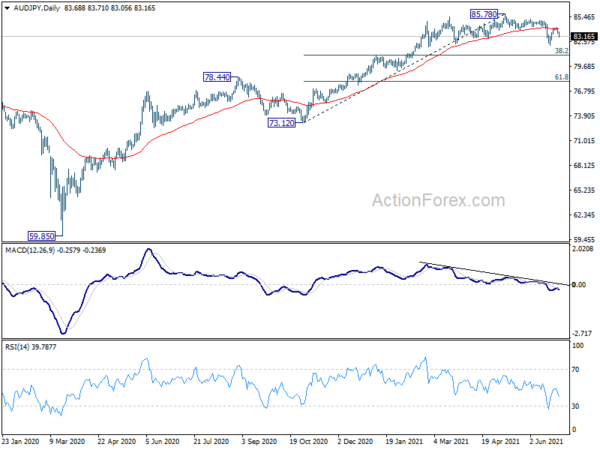
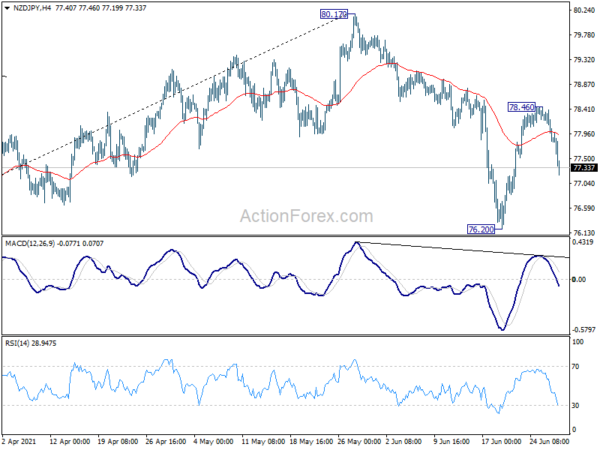
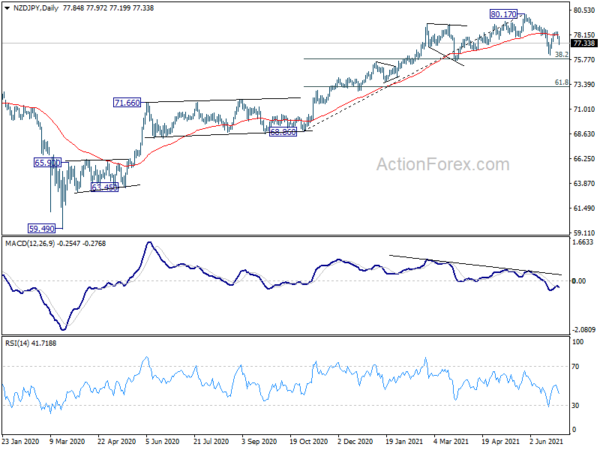
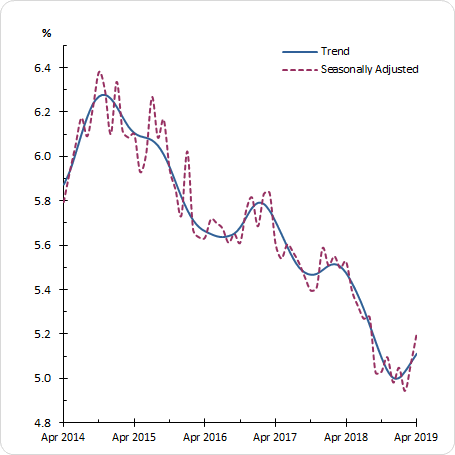
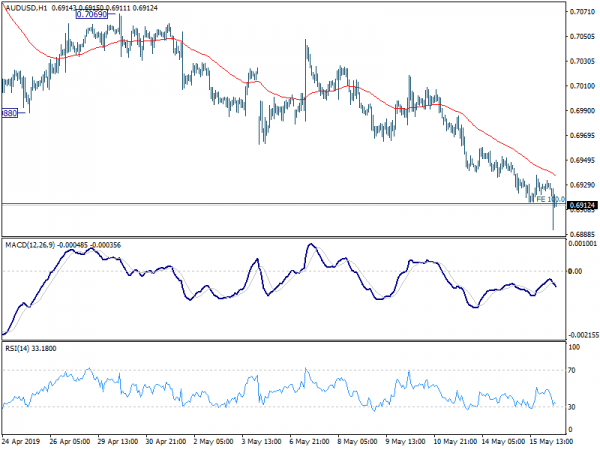

Eurozone Sentix investor confidence dropped sharply to 9.3 as expectation collasped
Eurozone Sentix Investor confidence dropped sharply to 9.3 in June, down from 19.2 and well below expectation of 18.6. And, for the fifth time in a row, overall index for GErmany dropped to its lowest level since July 2016. Expectation “collapsed” to -13.3, hitting the lowest level since August 2012.
Quote from the release:
“Now they are here, the American punitive tariffs. So far, this has done less harm than one might think to global economic expectations. It appears that investors still hope that the world’s trade dispute with the US will not get out of control. Investors, on the other hand, are far less lenient with developments within the euro zone. The new government in Rome is very sceptical. This is so strong that economic expectations in the euro zone are downright tilting.”
Full release here.